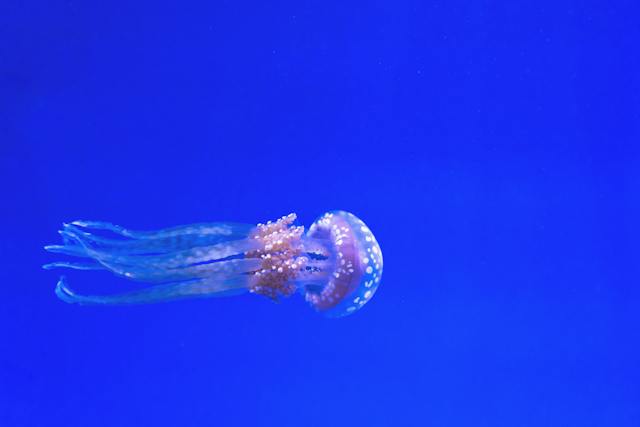Comments
- No comments found

Jellyfish sightings in UK waters and on its beaches have increased by 32% over the past year.
This has been confirmed by a survey conducted by the Marine Conservation Society.
While the most commonly observed jellyfish were the large barrel jellyfish, rarer warm-water crystal jellyfish were also spotted. These fluctuations in jellyfish populations are influenced by natural variations, but climate change-induced warming of UK seas is creating favorable conditions for these marine creatures.

A marine heatwave in June led to a 3-4°C increase in UK water temperatures, highlighting the impact of climate change on the marine environment. The world's temperature has risen by 1.1°C compared to the pre-industrial era, and a series of alarming records in recent years has raised concerns among scientists. In August, global ocean temperatures reached an all-time high.
The Marine Conservation Society's annual wildlife-sightings report is based on data collected from the public through an online form or app. From October 2022 to September 2023, jellyfish sightings increased by 32% compared to the previous year, with the majority reported on the UK's west coasts, particularly in Cornwall and Wales. A noteworthy 11% of these sightings involved large jellyfish blooms of more than 100 individuals.
Various jellyfish species were observed, including the barrel jellyfish, lion's mane jellyfish, Portuguese man o' war, moon jellyfish, and compass jellyfish. The barrel jellyfish, known for its size, can reach over 3 feet (1 meter) in diameter and has eight thick, frilled arms. There were 467 sightings of this species.
Dr. Peter Richardson, a marine biologist, suggests that these findings may be part of a 20-year boom-and-bust cycle in jellyfish populations, but the data also provides insight into the impact of climate change on marine ecosystems. Dr. Abigail McQuatters-Gollop, a plankton expert at the University of Plymouth, highlights the abundance of jellyfish this year and notes the presence of the crystal jellyfish, typically found in warmer waters. The hot weather in June created favorable marine conditions for these species in the UK.
This phenomenon could be an indication of "tropicalization of the oceans" as waters warm due to climate change, causing marine species to shift their ranges northward over time. While it remains unclear whether the high numbers of jellyfish this summer represent a long-term trend or are linked to marine heatwaves, more research is needed to understand these dynamics better.

In the long term, the warming of UK seas is expected to impact fish stocks and alter the food sources for species like cod. These changes will have far-reaching consequences for the marine ecosystem and fisheries.
The Marine Conservation Society survey also reported 12 turtle sightings, with four of these being the leatherback, the largest sea turtle.
If you encounter a jellyfish or a turtle, it's essential to avoid touching them. Jellyfish can deliver painful stings, and sea turtles may be in distress. To help monitor and protect these creatures, you can identify and report your sightings to the Marine Conservation Society through their online platform.
The increasing number of jellyfish sightings in UK waters reflects the influence of climate change on marine life. These findings underscore the need for continued research to understand the long-term implications of such changes on the marine ecosystem, including shifts in species distribution and potential disruptions to fisheries and biodiversity.
Leave your comments
Post comment as a guest